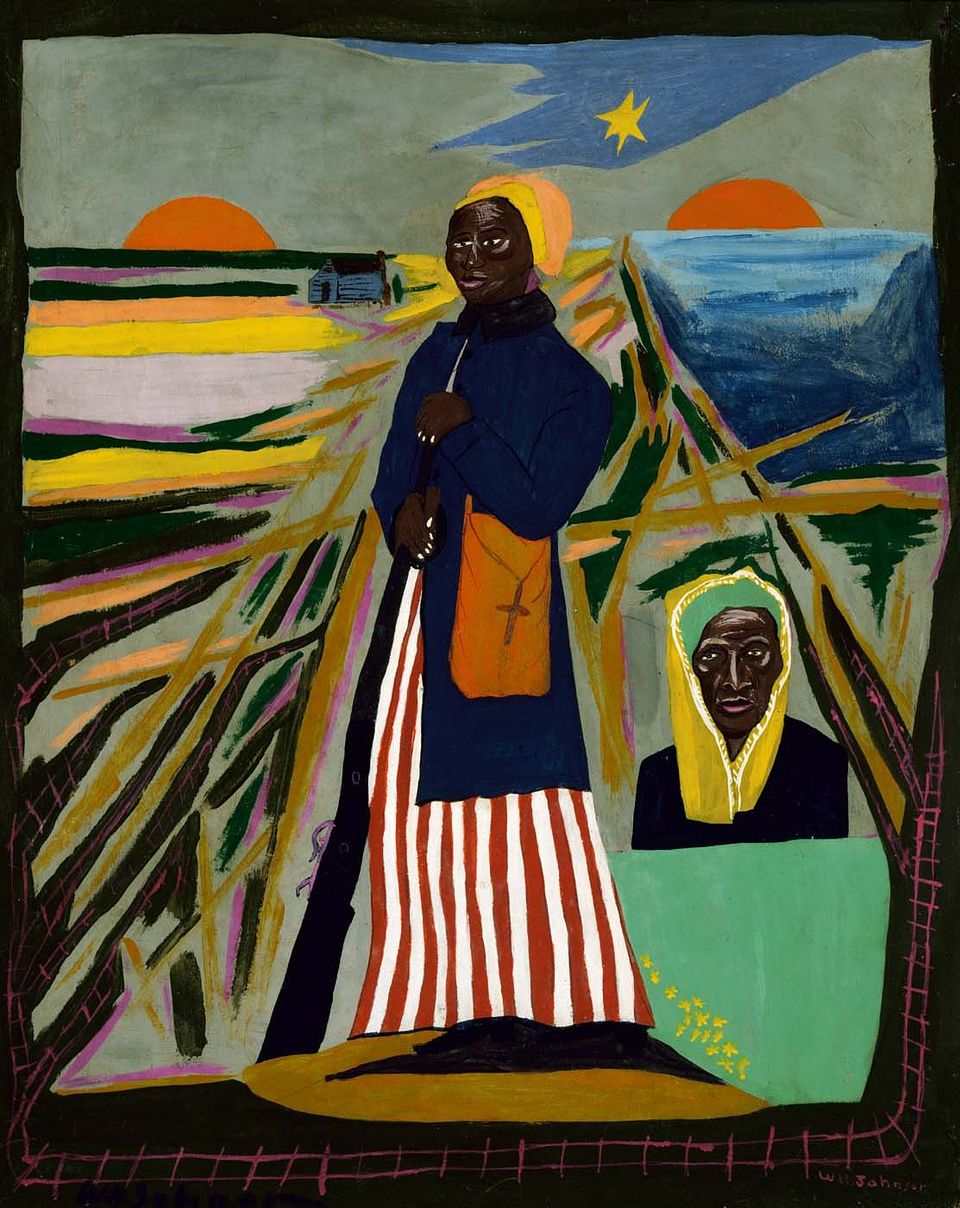William H. Johnson, Let My People Free, ca. 1945, oil on fiberboard (Bird-Fibre), 38 1⁄4 x 30 in. (97.1 x 76.2 cm), Smithsonian American Art Museum, Gift of the Harmon Foundation, 1967.59.649
Copied
Artwork Details
- Title
- Let My People Free
- Artist
- Date
- ca. 1945
- Location
- Not on view
- Dimensions
- 38 1⁄4 x 30 in. (97.1 x 76.2 cm)
- Credit Line
- Gift of the Harmon Foundation
- Mediums
- Mediums Description
- oil on fiberboard (Bird-Fibre)
- Classifications
- Subjects
- Figure group
- History — United States — Black History
- State of being — death — execution
- Portrait male — Lincoln, Abraham — full length
- Object Number
- 1967.59.649
Artwork Description
Johnson intentionally placed these towering figures of the Civil War on opposite sides of a table. Although Douglass had endorsed Lincoln's candidacy, he vehemently opposed Lincoln's effort to keep the Union together by allowing Southern states to perpetuate slavery and called Lincoln a "genuine representative of American prejudice and Negro hatred." After the Emancipation Proclamation took effect on January 1, 1863, Douglass altered his view and acknowledged Lincoln's "deep moral conviction." From then on, Douglass actively recruited African American soldiers to join the Union army (two of his own sons enlisted in the 54th Massachusetts Infantry Regiment) and advocated for their equal rights.
Exhibitions
March 8, 2024–September 10, 2024
William H. Johnson's Fighters for Freedom series from the mid-1940s is a tribute to African American activists, scientists, teachers, and performers as well as international leaders working to bring peace to the world.














